
С детства, прочитав рассказы, мы все когда-то думали о том, чтобы стать космонавтом, а некоторые действительно стали им, но те, кто все еще хочет быть частью освоения космоса и летательных аппаратов, могут стать аэроинженером, аэрокосмическим инженером, авиационным инженером, инженером космических аппаратов или аэродинамическим инженером.
В этой статье мы углубимся и узнаем информацию a2z о том, как стать одним из них, каковы требования и сколько вы можете заработать, если станете аэрокосмическим инженером. Итак, давайте исследовать.
Таблица содержания
- Резюме авиационного инженера
- Обязанности авиаинженера
- Где работают авиационные инженеры?
- Как стать аэрокосмическим инженером?
- Лучшие колледжи для изучения аэрокосмической техники
- Сколько зарабатывает аэрокосмический инженер?
- Перспективы трудоустройства
- Рост мировой аэрокосмической промышленности
- Игроки аэрокосмического рынка со ссылкой на страницу карьеры
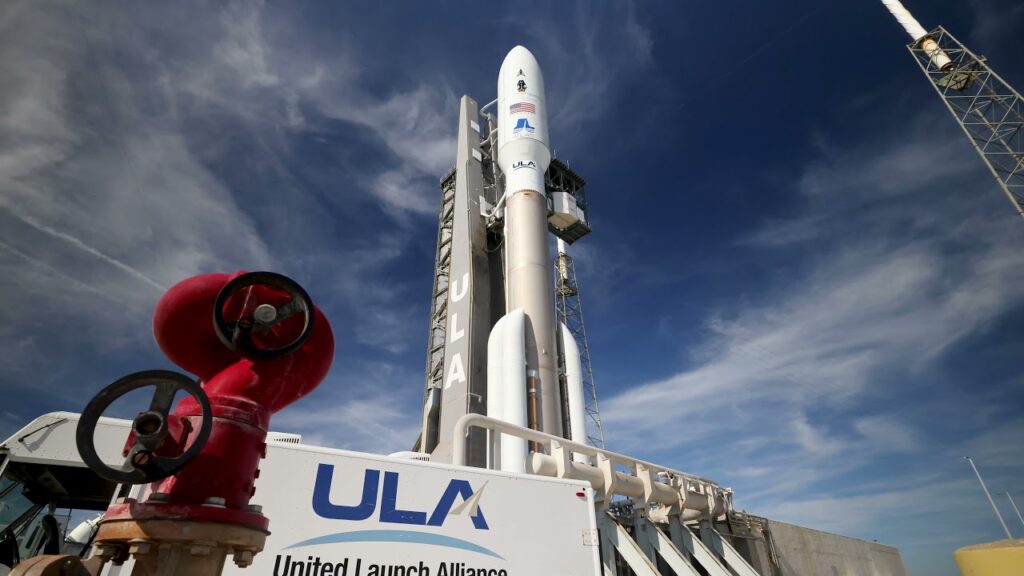 Источник: United Launch Alliance
Источник: United Launch AllianceРезюме авиационного инженера
Аэрокосмическая инженерия стимулирует инновации в области полетов и освоения космоса, формируя будущее воздушных и космических путешествий. Эта область охватывает создание, тестирование и производство самолетов, космических аппаратов и их вспомогательных систем, решая проблемы как в атмосферных, так и в космических полетах. Существует две отрасли аэрокосмической техники:
- Авиационная инженерияКлючевая отрасль аэрокосмической техники фокусируется на освоении полета в атмосфере Земли. Инженеры в этой области проектируют и улучшают самолеты, начиная от небольших дронов и заканчивая коммерческими авиалайнерами, повышая их безопасность, эффективность и производительность.
- Астронавтическая инженерияКосмический аналог выдвигает границы человеческого исследования за пределы нашей планеты. Эти инженеры разрабатывают космические аппараты, ракеты-носители и передовые технологии, необходимые для миссий на другие планеты и исследования дальнего космоса.
 Фото: pxhere
Фото: pxhereОбязанности авиаинженера
По данным Бюро статистики труда (BLS), аэрокосмические инженеры проектируют, разрабатывают и испытывают самолеты, космические аппараты, спутники и ракеты, обеспечивая функционирование этих сложных систем в соответствии с точными спецификациями.
Эти инженеры координируют весь жизненный цикл аэрокосмических проектов, от первоначальной концепции до производства и испытаний. Они оценивают предложения по технической и финансовой осуществимости, уравновешивая амбициозные цели с практическими ограничениями. Безопасность по-прежнему имеет первостепенное значение, поскольку инженеры тщательно оценивают проекты в соответствии со строгими стандартами и правилами.
Аэрокосмические инженеры разрабатывают комплексные критерии проектирования, качества и долгосрочного поддержания. Они обеспечивают соответствие проектов инженерным принципам, требованиям клиентов и экологическим нормам. Когда возникают проблемы, они проверяют неисправные продукты, выявляют первопричины и разрабатывают эффективные решения.
Область охватывает различные специализации.
- Некоторые инженеры сосредоточены на аэродинамике, оптимизируя поток жидкости вокруг транспортных средств. Другие специализируются на структурном проектировании, создавая надежные, но легкие компоненты.
- Системы управления, навигации и управления требуют опыта в сложных алгоритмах и сенсорных технологиях.
- Специалисты по связи и приборостроению разрабатывают передовую авионику.
- Инженеры-робототехники интегрируют автономные системы в аэрокосмические приложения.
- Специалисты по тяге и горению раздвигают границы технологии двигателя.
Аэрокосмические инженеры часто концентрируются на конкретных категориях продукции.
- Проектирование коммерческих и военных самолетов требует знания комфорта пассажиров, топливной эффективности и боевых возможностей.
- Дистанционно пилотируемые самолеты и винтокрылые летательные аппараты представляют уникальные проблемы в управлении и стабильности.
- Проектирование космических аппаратов включает в себя борьбу с суровой средой космоса, от ракет-носителей до спутников.
- Для проектирования ракет и ракет вам потребуются знания точного наведения и двигательных установок.
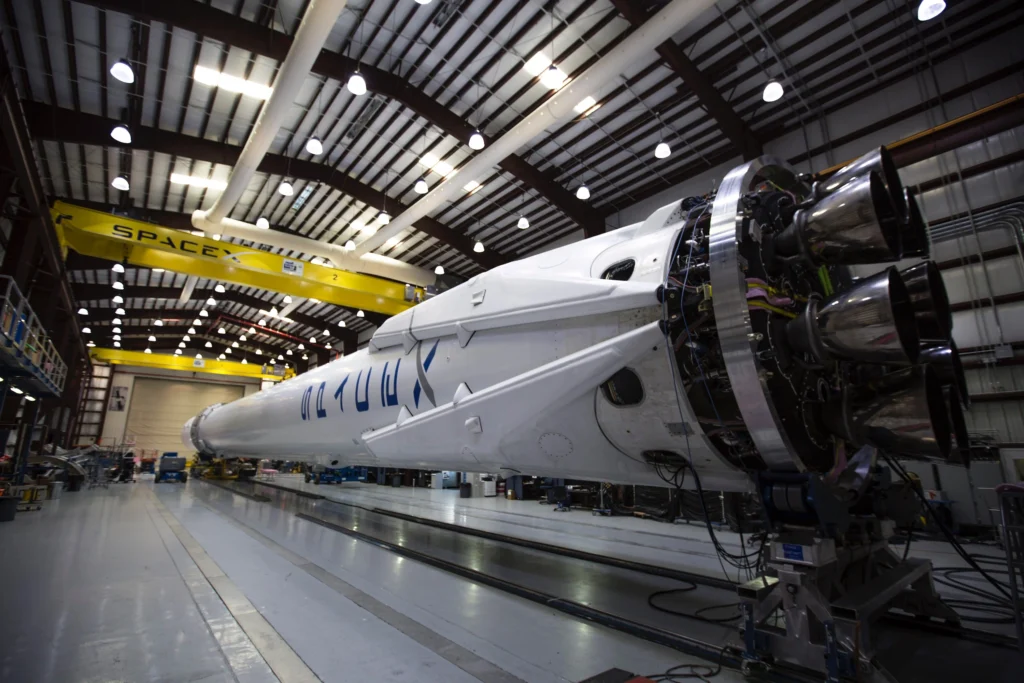 Фото: pxhere
Фото: pxhereГде работают авиационные инженеры?
По данным Бюро статистики труда Министерства труда США, в 2022 году в отрасли работало около 63 800 специалистов, при этом распределение рабочих мест подчеркивало ключевые области спроса и инноваций.
Вот таблица, представляющая распределение рабочих мест в аэрокосмической технике в разных секторах:
| Производство аэрокосмической продукции и деталей | 34% |
| Инженерные услуги | 16% |
| Федеральное правительство (исключая почтовую службу) | 16% |
| Исследования и разработки в области физических, инженерных и естественных наук | 10% |
| Производство навигационных, измерительных, электромедицинских и контрольных приборов | 6% |
| Другие сектора | 18% |
Рабочие среды для аэрокосмических инженеров обычно сосредотачиваются вокруг офисных настроек с широким использованием передовых компьютерных систем для проектирования и моделирования. Тем не менее, работа часто требует поездки, чтобы встретиться с клиентами, посетить производственные объекты или посетить отраслевые конференции.
Занятость на полный рабочий день является стандартом в аэрокосмической технике, причем некоторые должности требуют больше, чем обычно. 40 часов в неделю.
Продолжайте читать, чтобы узнать, где вы можете найти работу в этой области. Кроме того, мы добавим ссылки на компании, которые часто нанимают авиационных инженеров по всему миру.
Вот самый важный вопрос,
 Фото: UA News Center - Университет Алабамы
Фото: UA News Center - Университет АлабамыКак стать аэрокосмическим инженером?
Аэроинженер или аэрокосмический инженер требует степень бакалавра в области аэрокосмической техники или смежной области, чтобы служить основной точкой входа для начинающих специалистов.
Студенты средней школы должны сосредоточиться на химии, физике и математике, чтобы подготовиться к инженерным программам на уровне колледжа. Эти основополагающие предметы обеспечивают необходимую основу для понимания сложных аэрокосмических концепций.
Программы бакалавриата в аэрокосмической технике предлагают комплексные учебные программы. Студенты участвуют в классных лекциях, лабораторной работе и полевых исследованиях. Основные предметы включают стабильность и контроль, структуры и механику, обеспечивая всестороннее понимание аэрокосмических принципов.
Многие университеты предлагают совместные образовательные программы и стажировки в партнерстве с лидерами отрасли. Эти возможности позволяют студентам получить практический опыт, применить теоретические знания и построить профессиональные сети, завершая свои степени.
Некоторые учреждения обеспечивают ускорение 5-летние программы Приводя к обоим Степень бакалавра и магистра. Продвинутые степени открывают двери для академических должностей и ролей в области исследований и разработок, предлагая возможности карьерного роста.
Аккредитация играет решающую роль в аэрокосмическом инженерном образовании. Работодатели предпочитают выпускников Аккредитованные программы ABET, поскольку они обеспечивают стандартизированный уровень качественного образования. Аккредитованные степени обычно требуются для профессионального лицензирования.
Хотя должности начального уровня не требуют лицензирования, опытные инженеры могут продолжить работу. Лицензии на профессиональную инженерию (PE). Сертификация PE позволяет инженерам контролировать проекты, подписывать проекты и предлагать услуги непосредственно общественности.
Процесс лицензирования включает в себя несколько этапов:
- Получение степени бакалавра или выше по программе, аккредитованной ABET
- Сдача экзамена по основам инженерии (FE)
- Получение соответствующего опыта работы (обычно несколько лет)
- Сдача экзамена Professional Engineering (PE)
Лицензирование является государственным, но большинство штатов предлагают взаимность для лицензий, полученных в других местах, при условии, что первоначальные требования штата соответствуют или превышают их собственные стандарты. Многие штаты требуют непрерывного образования для лицензированных инженеров, чтобы сохранить свои полномочия, обеспечивая профессионалам актуальность отраслевых разработок.
Для аэрокосмических инженеров, работающих над проектами национальной обороны, могут потребоваться разрешения на безопасность. Кроме того, некоторые уровни допуска требуют гражданства США, добавляя дополнительное внимание к тем, кто занимается карьерой в аэрокосмической технике, связанной с обороной.
Техническая экспертиза и лидерские способности прокладывают путь для руководящих ролей, инженерных управленческих должностей и специализаций по управлению проектами.
 Фото: pxhere
Фото: pxhereВажные навыки для авиаинженера:
- Аналитические навыки Ядро аэрокосмической инженерии. Инженеры критически оценивают элементы дизайна, предлагая улучшения для повышения производительности, безопасности и эффективности.
- Деловая хватка дополняет технические знания в аэрокосмической технике. Понимание коммерческого права и федеральных стандартов имеет решающее значение для соответствия и успеха проекта.
- Эффективная коммуникация Это жизненно важно в аэрокосмической технике. Инженеры должны четко сформулировать сложные детали дизайна, как устно, так и письменно.
- Межличностные навыки Содействовать сотрудничеству в аэрокосмических инженерных командах. Инженеры взаимодействуют с коллегами из различных дисциплин и нетехническими членами команды.
- Математические навыки Основы аэрокосмической инженерной работы. Передовая математика, включая исчисление и тригонометрию, имеет важное значение для анализа, проектирования и устранения неполадок.
- Способности к решению проблем стимулирование аэрокосмических инноваций. Инженеры постоянно модернизируют конструкции для повышения производительности самолетов, уделяя особое внимание таким аспектам, как топливная экономичность и безопасность.
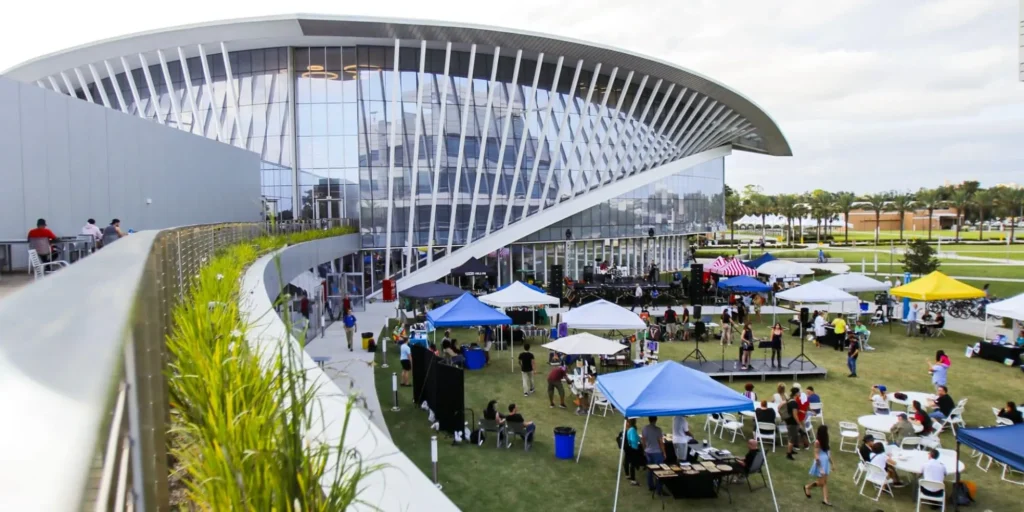 Изображение: Daytona Beach | Embry-Riddle Aeronautical University
Изображение: Daytona Beach | Embry-Riddle Aeronautical UniversityЛучшие колледжи для изучения аэрокосмической техники
Лучшие колледжи в США
В этом списке представлен предварительный обзор ведущих аэрокосмических инженерных учреждений в определенном рейтинге. Вот краткий обзор этих учреждений:
- Массачусетский технологический институт (MIT): Известен своими передовыми исследованиями и инновациями в аэрокосмической технике.
- Калифорнийский технологический институт: известен тем, что обеспечивает отличное образование на уровне магистра и доктора философии в США
- Технологический институт Грузии: Предлагает сильную программу аэрокосмической техники с обширными исследовательскими возможностями.
- ВВС США Академия обеспечивает специализированное аэрокосмическое инженерное образование для будущих офицеров ВВС.
- Университет Пердью - Западный Лафайетт: Имеет давнюю репутацию превосходства в аэрокосмической технике.
- Embry-Riddle Aeronautical Университет: Особое внимание уделяется авиационному и аэрокосмическому образованию. Лучший колледж для размещения возможностей в аэрокосмической промышленности.
- Rensselaer Polytechnic Институт предлагает комплексную программу аэрокосмической техники с сильным акцентом на технологии.
- Мичиганский университет: известен своей научно-ориентированной программой аэрокосмической техники.
- Техасский университет в Остине: Обеспечивает надежную учебную программу аэрокосмической техники с различными специализациями.
- Университет Колорадо Боулдер: Предлагает хорошо известную программу аэрокосмической техники, связанную с аэрокосмической промышленностью.
- Университет Мэриленда, Колледж-Парк: имеет сильный отдел аэрокосмической техники с различными областями исследований.
- Принстонский университет: Персонал высококвалифицированный и имеет один из лучших инженерных факультетов в стране.
Лучшие колледжи Индии
Индия может похвастаться более чем 100 высшими школами аэрокосмической техники, 78 из которых находятся в частной собственности и 17 управляются государственными или правительственными организациями.
Среди престижных учреждений IIT Bombay, IIT Madras, IIT Kharagpur, IIT Hyderabad и IIT Kanpur выделяются как столпы передового опыта в аэрокосмическом инженерном образовании. Вот список лучших колледжей для изучения аэрокосмической техники в Индии.
- Индийский технологический институт (IIT) Мадрас
- Индийский технологический институт (IIT), Дели
- Индийский технологический институт (IIT) Бомбей
- Индийский технологический институт (IIT) Канпур
- Индийский технологический институт (IIT) Kharagpur
- Индийский технологический институт (IIT) Хайдарабад
- LPU
- Университет Чандигара
- СРМ IST Каттанкулатур
- Састра
- Институт технологии Ramaiah
- Технологический университет Visvesvaraya
Есть много других хороших колледжей, поэтому сделайте свое собственное исследование и на основе удобства выберите их.
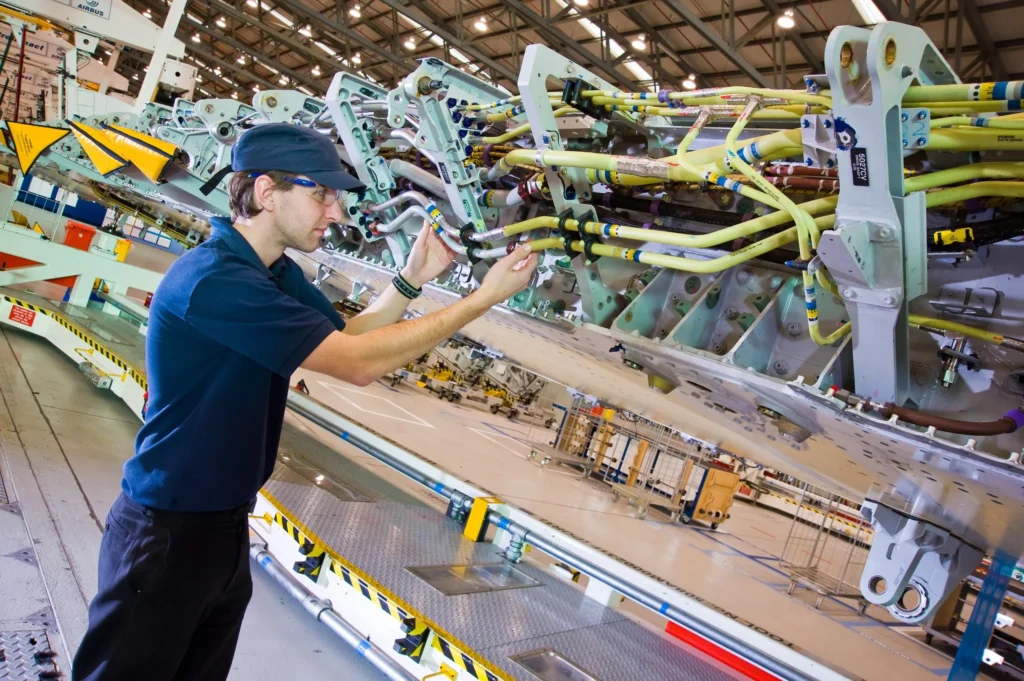 Фото: Flickr
Фото: FlickrСколько зарабатывает аэрокосмический инженер?
По данным Бюро статистики труда, занятости и заработной платы США, по состоянию на май 2023 года аэрокосмические инженеры получили значительную компенсацию в различных отраслях. Средняя годовая заработная плата Инженеры аэрокосмической отрасли достигли $130,720.
Среднегодовая заработная плата аэрокосмических инженеров в мае 2023 года была следующей:
| Исследования и разработки в области физических, инженерных и естественных наук | $136 620 |
| Производство навигационных, измерительных, электромедицинских и контрольных приборов | $135 280 |
| Федеральное правительство (исключая почтовую службу) | $133 040 |
| Производство аэрокосмической продукции и деталей | $130,720 |
| Инженерные услуги | $128 870 |
Исследования и разработки в области физики, инженерии и наук о жизни предлагают самую высокую среднюю зарплату. $136 620.
Некоторые должности, упомянутые выше, требуют более 40-часовой рабочей недели.
 Фото: Sora Shimazaki: https://www.pexels.com/photo/woman-filling-job-application-form-in-office-with-boss-5668858/
Фото: Sora Shimazaki: https://www.pexels.com/photo/woman-filling-job-application-form-in-office-with-boss-5668858/Перспективы трудоустройства
Перспективы аэрокосмической инженерии остаются положительными, при этом прогнозируемый рост опережает средний показатель по всем профессиям. С 2022 по 2032 год ожидается расширение месторождения на 6%, что свидетельствует о высоком спросе на квалифицированных специалистов.
Бюро статистики труда США прогнозирует около 3800 ежегодных открытий для аэрокосмических инженеров в течение следующего десятилетия. Эти возможности обусловлены как ростом промышленности, так и необходимостью замены выходящих на пенсию работников или тех, кто переходит на разные роли.
Этот рост обусловлен несколькими факторами:
- Редизайн самолета Инициативы направлены на снижение шума и топливную экономичность, стимулируя спрос на инновационные инженерные решения.
- Достижения в спутниковая технологияВ частности, экономичные малые спутники расширяют коммерческую жизнеспособность и увеличивают спрос на аэрокосмическую экспертизу.
- Растущий интерес к Применение дроновОбнаружение лесных пожаров создает новые инженерные проблемы и возможности.
- Постоянные инвестиции в исследование космоса Коммерческие космические полеты подпитывают потребность в специализированных аэрокосмических знаниях.
Вот таблица, обобщающая данные прогнозов занятости для аэрокосмических инженеров с 2022 по 2032 год:
| Инженеры аэрокосмической отрасли | 17-2011 | 63 800 | 67 700 | 6% (3900) |
Данные показывают прогнозируемое увеличение 3900 рабочих мест, доведя общую занятость с 63 800 в 2022 году до 67 700 к 2032 году. Так что да, это немного меньше рабочих мест, но это только данные из одной страны, другие развивающиеся страны распределяют бюджеты в космической, оборонной и аэрокосмической областях, и это создаст тысячи рабочих мест по всему миру.
 Фото: Airbus
Фото: AirbusРост мировой аэрокосмической промышленности
Согласно Прецедентное исследованиеДанные и статистика мирового аэрокосмического рынка демонстрируют устойчивый рост, а прогнозы указывают на значительное расширение в течение следующего десятилетия. Эта тенденция отражает устойчивость отрасли и продолжающиеся инновации в различных секторах.
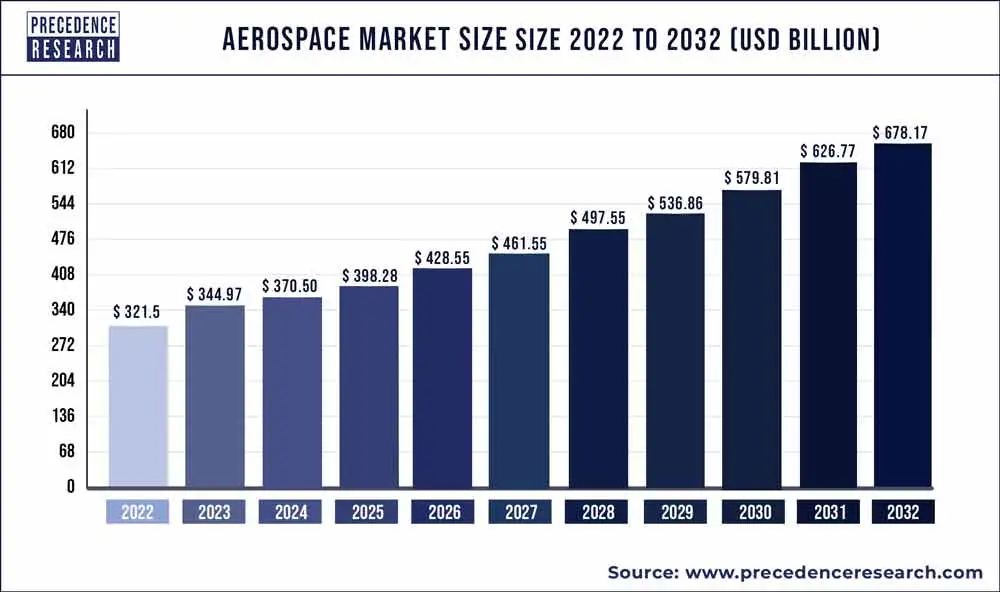 Размер, доля и тенденции аэрокосмического рынка с 2022 по 2032 год
Размер, доля и тенденции аэрокосмического рынка с 2022 по 2032 годКлючевые идеи аэрокосмического рынка:
- Размер рынка в 2022 году: $321,5 млрд
- Прогнозируемый размер рынка к 2032 году: 678,17 млрд долларов США
- Составной годовой темп роста (CAGR): 7,80%
Американский аэрокосмический рынок демонстрирует значительный потенциал роста, отражая глобальные тенденции отрасли.
Ключевые идеи рынка США:
- Размер рынка в 2022 году: $103,52 млрд
- Прогнозируемый размер рынка к 2032 году: $218,37 млрд
- Составной годовой темп роста (CAGR): 7,80%
Северная Америка Воздушно-космические доходы, претендует на 46% в 2022 году. Boeing и Lockheed Martin внедряют инновации на этом зрелом рынке. Ключевые тенденции включают устойчивую авиацию, освоение космоса SpaceX и увеличение расходов на оборону. Сектор коммерческой авиации региона ориентирован на эффективность и опыт пассажиров.
Азиатско-Тихоокеанский регион Аэрокосмический рынок растет быстрее. Рост пассажиропотока в Китае и Индии способствует развитию коммерческой авиации. Правительства инвестируют в обороноспособность. Регион продвигается в космической деятельности, включая исследования Луны и спутниковые технологии. Увеличивается производство самолетов, расширяется международное космическое сотрудничество.
Воздушно-космический сектор Европы Отличается технологиями и инновациями. Airbus и Rolls-Royce лидируют в отрасли. Регион нуждается в коммерческих и военных самолетах, при этом отдавая приоритет устойчивой практике и безопасности. Европейское космическое агентство вносит свой вклад в исследования космоса. Европейская аэрокосмическая промышленность стремится к совершенству и экологической ответственности.
Сейчас появляются одни из крупнейших игроков в этом секторе,
 Фото: Noriko YAMAMOTO - https://www.flickr.com/photos/lllnorikolll-300er/4275245501/in/photostream/, CC BY 2.0, https://commons.wikimedia.org/w/index.php?curid=100805177
Фото: Noriko YAMAMOTO - https://www.flickr.com/photos/lllnorikolll-300er/4275245501/in/photostream/, CC BY 2.0, https://commons.wikimedia.org/w/index.php?curid=100805177Игроки аэрокосмического рынка со ссылкой на страницу карьеры
Добавьте больше государственных и частных компаний
- NASA: Карьера в инженерии - NASA
- ISRO: все текущие возможности (isro.gov.in)
- SpaceX: поиск работы
- Компания Boeing: Поисковая инженерия Работа в Boeing
- Airbus SE: Карьера (myworkdayjobs.com)
- Lockheed Martin Corporation: инженерная карьера
- Northrop Grumman Corporation: Инженерная карьера: сделайте что-то невероятное
- Технологии Raytheon Корпорация: Карьера в RTX | Работа в RTX
- Общая динамика Корпорация: Карьера в GD | General Dynamics
- Safran S.A.: Вакансии | Safran (safran-group.com)
- BAE Systems plc: Карьера
- Honeywell International Inc.: Результаты поиска | Найти доступные вакансии в Honeywell
- General Electric Компания: Результаты поиска | Найти доступные вакансии на GE Aerospace (gecareers.com)
- Thales Group: инженерные возможности в Thales Group
- Компания Rolls-Royce Holdings plc: Apply
- Объединенные технологии Корпорация: Raytheon (rtx.com)
- Леонардо С.П.А.: Работай с нами
Многие из вышеупомянутых компаний также предоставляют возможности для стажировки и обучения. Убедитесь, что вы их проверили.
Если вы находитесь в Соединенных Штатах, то вы можете найти список доступных позиций на основе вашего штата и пин-код здесь: 17-2011.00 - Aerospace Engineers (onetonline.org)
Вот и с нашей стороны, надеюсь, вы получили информацию a2z по аэрокосмической технике. Выберите свою карьеру с умом, и вы никогда не почувствуете, что работаете, вместо этого вам понравится.
аэрокосмическая инженерия часто задаваемые вопросы
По данным US BLS, инженеры Aerospace могут заработать среднюю зарплату $130,720.
Аэрокосмические инженеры разрабатывают конкретные критерии для проектирования, качества и долгосрочного поддержания. Они обеспечивают соответствие проектов инженерным правилам, требованиям клиентов и экологическим нормам.
Массачусетский технологический институт (MIT) известен своими передовыми исследованиями и инновациями и является лучшим колледжем для продолжения карьеры в аэрокосмической технике.
IIT Bombay, IIT Madras, IIT Kharagpur, IIT Hyderabad и IIT Kanpur являются одними из лучших колледжей для изучения аэрокосмической техники в Индии.
Да, оба они похожи и очень тесно связаны друг с другом. Космическая инженерия включает в себя борьбу с суровой средой космоса, от ракет-носителей до спутников.
Есть несколько веб-сайтов, включая space.com, aero mag, аэрокосмические глобальные новости и Aviation A2z.
Оставайтесь с нами. Следуйте за нами в социальных сетях для последних обновлений.
Авиакомпании США, включая American, United, Delta и Southwest, хотят, чтобы вы одевались правильно - Aviation A2Z
Присоединяйтесь к нам в Telegram Group для последних обновлений авиации. Следуйте за нами в Google News.
Самые быстрые самолеты в мире 2024 Список
Аэрокосмическая инженерия: как стать авиационным инженером? Впервые появился на Aviation A2Z.















